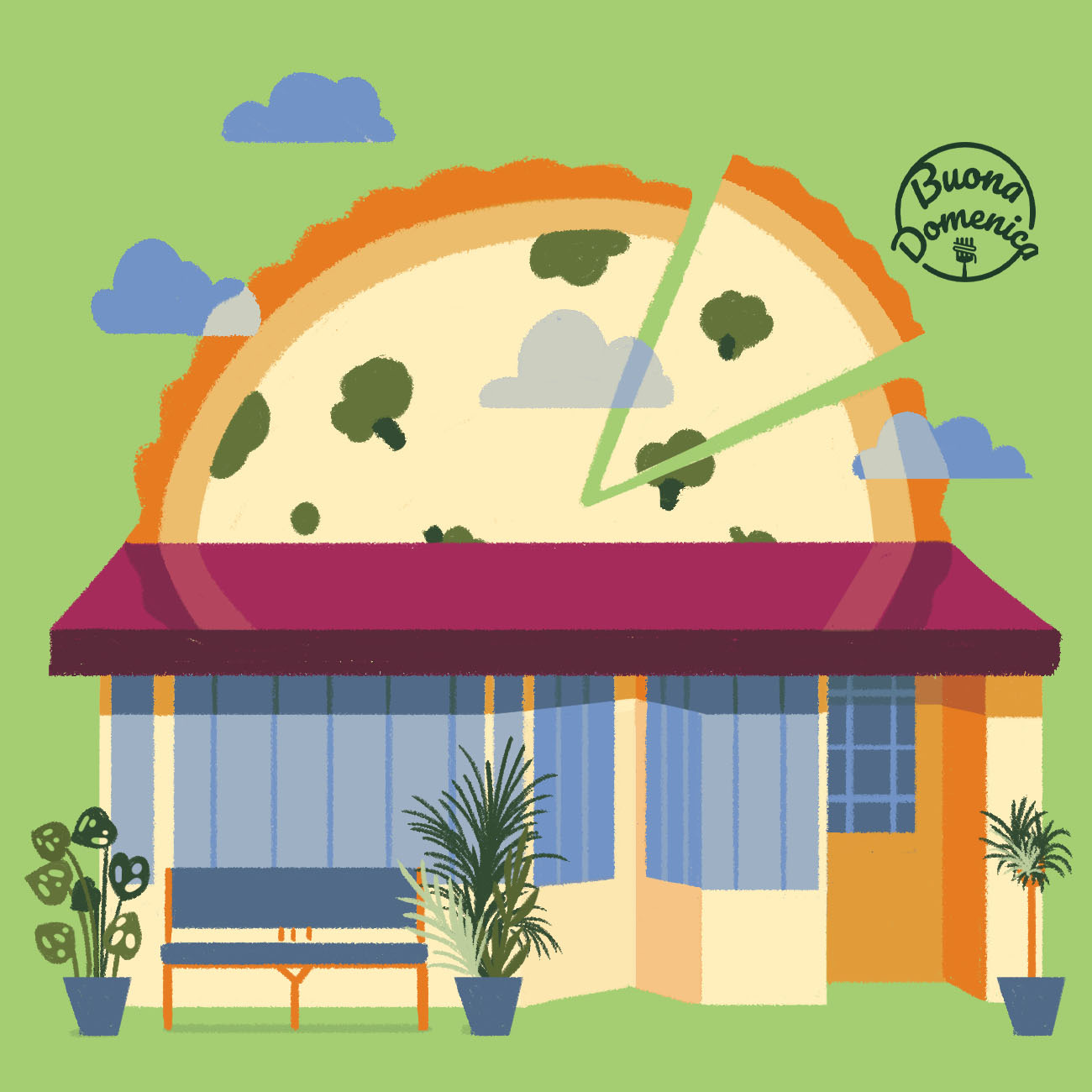
Bonjour! We are crossing the border from Italy into France this week so that I can share with you the recipe for one of my all-time favorite dishes: quiche.
I say France, but I suppose what I’m really talking about is 1970s New Jersey, which is where quiche first crossed my radar. All of a sudden, my Italian mom and her friends were exchanging recipes for quiche Lorraine, serving spinach and mushroom quiche at potluck brunches, and lunching on ham and Swiss quiche at little soup-salad-quiche eateries that were popping up around Princeton.
In those days, our mom would occasionally take my sister and me into the city to shop. We would hit Blooomingdales and Bonwit Teller (RIP), and the glittery Disco-era clothing emporium Fiorucci (RIP), with its iconic twin cherub logo, bright animal prints and cool, flourescent graphics. A few blocks away on West 55th was (the much more sedate) La Bonne Soupe, where the three of us would sit down to a cup of the soupe du jour and an omelet or a wedge of quiche. La-di-dah, life was good for us, and for quiche.
Then, one day, in sashayed sushi, fresh, colorful, whimsical, raw. So exciting. It was the 80s; disco was dead. Au revoir, La Bonne Soupe, adieu quiche.
I hadn’t thought of La Bonne Soup in many years, but it popped into my head the other afternoon as I was rolling out the dough to make quiche for dinner. I had to stop what I was doing and google it, and I am happy to say it has not gone the way of Bonwit’s, Fiorucci, and disco. What’s more, I’m pretty sure the menu is the same.
The truth is, I never stopped loving quiche; a childhood favorite is a favorite always. I made it occasionally when I was living on my own and I started making it again regularly when my kids were little. It was something we all enjoyed, because how can you not like a fusion of egg custard, melty cheese, bacon and/or vegetables? I started with a classic Jacques Pepin recipe for leek and Gruyère quiche, but I quickly veered without paying too much attention to tradition: Swiss chard and Comté, roasted peppers and Fontina, sundried tomatoes (yep) and Asiago, ham and caramelized onion. Shiitake, bacon, scallions and fresh corn off the cob was a particularly successful experiment.
As good as my quiches were, I didn’t realize that I was making a fundamental mistake until a trip to France in 2017. I was visiting my friend and fellow food writer
(we were teaching a food-writing workshop at her hotel in Chinon). I had a slice of quiche at a brasserie for lunch that changed everything. For one thing, it was nearly twice the height than standard quiche. And though it was rich, it was also deceptively light; that is, the custard was smooth, silken, not at all “eggy.”It dawned on me: all these years, I’d been baking quiche at the wrong temperature. In fact, if you look up recipes for quiche, almost all of them call for baking it in a moderately hot (375° F) oven, when really you should be baking it at a low temperature to keep the custard from toughening. Duh. When I got home, I switched to a deep-dish tart pan and turned the oven temp down to 325°. Voilà: next-level quiche unlocked.
The quiche recipe I’m sharing below, which has smoky bacon, broccoli florets, and dollops of Gorgonzola, is a family favorite. You can adjust it to suit your own tastes. But first, some tips in case your quiche skills are a little rusty.
Keep reading with a 7-day free trial
Subscribe to Buona Domenica to keep reading this post and get 7 days of free access to the full post archives.



